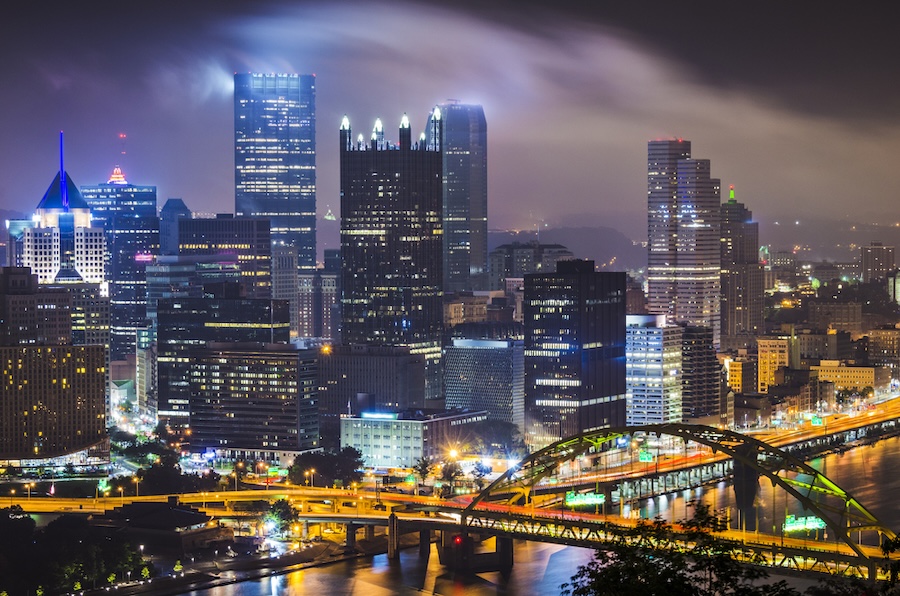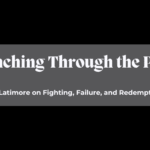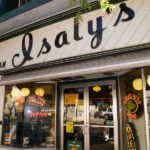Table of Contents
Pittsburgh—once known as the Steel City—has transformed into a vibrant urban hub, captivating residents and visitors alike. As the city experiences a renaissance, its unique blend of rich history, diverse culture, and stunning landscapes has sparked widespread interest and admiration.
From its industrial roots to a flourishing arts scene, Pittsburgh boasts a multifaceted identity that appeals to many seeking their next home. Nestled at the confluence of rivers, this city offers a geographical charm complemented by a community spirit that is hard to find elsewhere.
In this ultimate guide, we’ll delve into what makes Pittsburgh a top destination for living. From exploring its neighborhoods and cultural offerings to examining affordable living and community engagement, you’ll discover why so many are raving about the Steel City.
The History and Etymology of Pittsburgh
Pittsburgh, known as the “Steel City,” has a fascinating history and etymology. Founded in 1758, it was named by General John Forbes in honor of British Prime Minister William Pitt. The name reflects the city’s strong roots in the industrial era.
In the late 1800s and early 1900s, Pittsburgh thrived as a steel manufacturing hub. This brought prosperity and growth, turning it into one of America’s major cities for industry.
Pittsburgh’s history is also tied to its rivers—the Allegheny, Monongahela, and Ohio—essential for transportation and trade. This made it a strategic location for industrial development.
Today, Pittsburgh is more than just steel. It is known for its contributions to education and technology, housing institutions like Carnegie Mellon University. The city has evolved into one of the country’s most livable cities, blending its rich history with modern advancements.
Here’s a quick look at Pittsburgh’s historical timeline:
| Year | Event |
|---|---|
| 1758 | City named after William Pitt |
| Late 1800s | Rise as a steel production center |
| Present | Known for education and technology |
Pittsburgh continues to honor its past while embracing a vibrant future.
The Geographical Setting of Pittsburgh
Pittsburgh, often called the Steel City, is located in western Pennsylvania. Nestled at the junction of the Allegheny, Monongahela, and Ohio Rivers, its geography uniquely shapes the city. The hilly terrain and numerous bridges add to Pittsburgh’s charm and accessibility. Mount Washington offers breathtaking views of Downtown Pittsburgh and its rivers. This area is a favorite spot for both locals and tourists.
The city’s location in Allegheny County places it at the northern end of the Appalachians, offering a blend of urban and natural beauty. Pittsburgh’s lush parks, such as Schenley Parks, provide a touch of nature right within the city limits. Squirrel Hill and Fox Chapel are among the many scenic neighborhoods offering lovely green spaces and single-family homes.
Geographical Features of Pittsburgh:
| Feature | Description |
|---|---|
| Rivers | Allegheny, Monongahela, and Ohio Rivers |
| Terrain | Hilly with numerous bridges |
| Notable View | Mount Washington |
| Parks | Schenley Parks and other green spaces |
With its rich natural beauty and strategic location, Pittsburgh offers residents a stunning backdrop for daily life.
Cultural Scene: Arts, Theater, and Literature
Pittsburgh’s cultural scene is vibrant and diverse, making it a standout among major cities. The city’s rich history and cultural offerings rival those of much larger cities. The Carnegie Museum of Art is a must-visit for art lovers. It showcases works from both local and global artists.
Theater enthusiasts will enjoy Pittsburgh’s thriving theater district. The Benedum Center and Heinz Hall offer a range of performances, from Broadway shows to symphony concerts. Pittsburgh also boasts a dynamic literary community. Independent bookstores like City Books offer events and readings that engage the community.
Here’s what makes Pittsburgh’s cultural scene special:
- Art: Carnegie Museum of Art, Mattress Factory
- Theater: Benedum Center, Heinz Hall, Pittsburgh Public Theater
- Literature: City Books, workshops, author readings
The city’s commitment to arts and culture significantly boosts its quality of life. With an affordable cost of living, Pittsburgh stands out as one of the most livable cities. Whether you’re an art aficionado, theater buff, or bookworm, Pittsburgh’s cultural landscape has something for everyone.
The Vibrant Sports Culture: Football, Baseball, and Basketball
Pittsburgh is a paradise for sports fans. The city is home to professional sports teams that bring energy and pride. Steelers football games at Heinz Field are legendary, with the team winning six Super Bowls. The Pirates make summers unforgettable at PNC Park. The magnificent view of the Pittsburgh skyline complements any baseball game. Not just football and baseball, Pittsburgh also boasts a strong basketball culture.
The University of Pittsburgh Panthers and nearby colleges like Carnegie Mellon University offer thrilling college basketball games. The Steel City supports a vibrant sports culture that goes beyond professional leagues. Numerous youth programs and intramural leagues thrive, providing all residents with opportunities to play or cheer.
Why Pittsburgh for Sports?
- NFL Team: Pittsburgh Steelers
- MLB Team: Pittsburgh Pirates
- Basketball: College teams and local leagues
Pittsburgh’s sports venues are easily accessible. Fans can take the light rail or drive short distances from lively neighborhoods like Squirrel Hill. Whether you live near the Monongahela River or in scenic Fox Chapel, the sense of community and shared passion for sports make Pittsburgh one of the most livable cities for sports enthusiasts. Come for the games, stay for the camaraderie.
Demographics and Regional Identity in Pittsburgh
Pittsburgh, affectionately known as the Steel City, boasts a rich demographic and regional identity. This vibrant city, nestled in Allegheny County, is a tapestry of diverse communities. With a population reflecting various cultures and ethnicities, Pittsburgh thrives on its strong sense of community.
Demographics Snapshot:
| Category | Percentage |
|---|---|
| White | 66.4% |
| African American | 23.0% |
| Asian | 5.7% |
| Hispanic/Latino | 2.3% |
| Other | 2.6% |
Pittsburgh’s regional identity is heavily influenced by its industrial past. Yet, it is also shaped by the presence of esteemed institutions like Carnegie Mellon University. This blend of old and new drives a cultural renaissance in the area.
Neighborhoods such as Squirrel Hill and Fox Chapel highlight Pittsburgh’s unique flair. These areas blend historic charm with modern living, promoting both an affordable cost of living and a quality lifestyle.
The city’s connection to its natural beauty is evident in places like Schenley Park, offering rich green spaces and scenic views of the Monongahela River. This combination of demographic variety and regional heritage makes Pittsburgh a truly livable city.
Climate and Environmental Quality
Pittsburgh is known for its excellent climate and environmental quality. The city’s natural beauty includes parks like Schenley Park and the stunning views from Mount Washington. These areas offer a break from urban life and are perfect for outdoor activities.
One reason Pittsburgh is an attractive place to live is its moderate climate. The seasons are distinct, offering snow in winter and lush greenery in summer. This variety appeals to many who enjoy diverse weather patterns.
Pittsburgh also excels in environmental efforts. The city has improved its air quality significantly over the years. It focuses on sustainability and green initiatives, which contribute to a high quality of life. This commitment makes Pittsburgh one of the more livable cities compared to many other major cities.
Here is a quick comparison:
| Factor | Pittsburgh | National Average |
|---|---|---|
| Air Quality Improvement | Significantly | Moderate |
| Green Spaces | Extensive | Varies |
These factors contribute to Pittsburgh’s appeal, showcasing a balance of urban living and nature. The city’s commitment to improving environmental quality enhances residents’ lives, making it a top choice for those seeking both comfort and nature.
Affordable Living: Cost of Living Insights
Pittsburgh offers an irresistible mix of affordable living and high quality of life. Known as one of the most affordable cities in the U.S., Pittsburgh boasts a cost of living well below the national average. Housing costs are especially appealing. The median rent in Pittsburgh is cheaper than in many major cities, making it easier for families to find single-family homes.
Here’s a quick snapshot:
| Expense Category | Pittsburgh | National Average |
|---|---|---|
| Housing | Lower | Higher |
| Transportation | Moderate | Moderate |
| Groceries | Affordable | More Expensive |
Pittsburgh is home to prestigious institutions like Carnegie Mellon University, which attracts top talent and fuels local job opportunities. In addition, the city’s light rail system makes commuting both easy and budget-friendly.
The sense of community in neighborhoods such as Squirrel Hill and Fox Chapel creates a welcoming environment. Combined with Mount Washington’s natural beauty and vibrant Downtown Pittsburgh, it’s no wonder Pittsburgh ranks highly among livable cities. Whether you’re drawn by the Steel City’s rich history or its passion for professional sports teams, Pittsburgh offers an affordable cost of living without sacrificing lifestyle.
Best Neighborhoods for Quality Living
Pittsburgh is a top choice for quality living due to its diverse neighborhoods. Each area has something unique to offer.
Squirrel Hill is perfect for those seeking a vibrant community feel. It’s close to Carnegie Mellon University and has a bustling local scene. There are green spaces like Schenley Park too.
For stunning views, look no further than Mount Washington. This area combines a lively atmosphere with breathtaking vistas of Downtown Pittsburgh and the Monongahela River.
Fox Chapel is great for families who prefer spacious single-family homes and parks. It provides a peaceful environment within Allegheny County.
Here’s a quick comparison:
| Neighborhood | Highlight | Nearby Attractions |
|---|---|---|
| Squirrel Hill | Community & Green Spaces | Carnegie Mellon University |
| Mount Washington | Scenic Views & Nightlife | Downtown Pittsburgh |
| Fox Chapel | Family-Friendly Environment | Parks |
Pittsburgh’s neighborhoods cater to various lifestyles and preferences, making it one of the most livable cities with a strong sense of community and an affordable cost of living.
Recreational Opportunities and Parks
Pittsburgh is a haven for nature lovers and outdoor enthusiasts. The city boasts a wealth of parks and green spaces, making it one of the most livable cities in the nation.
Popular Parks in Pittsburgh:
- Schenley Park: A hub for students and families alike, offering hiking trails, sports facilities, and even a golf course.
- Frick Park: Known for its natural beauty, it provides ample space for walking, biking, and bird watching.
- Highland Park: Features beautiful gardens and the Pittsburgh Zoo & PPG Aquarium.
Table 1: Notable Parks in Pittsburgh
| Park Name | Signature Features |
|---|---|
| Schenley Park | Hiking, golf, sports facilities |
| Frick Park | Natural trails, bird watching |
| Highland Park | Gardens, zoo, aquarium |
Situated near the Monongahela River, the city’s parks offer stunning views and a variety of activities. Mount Washington, famous for its scenic overlooks, adds to the city’s charm. The nearby trails provide excellent spots for hiking and biking.
Pittsburgh’s commitment to its parks enhances the quality of life in this affordable city, contributing to a strong sense of community and appealing to all ages.
Pittsburgh’s Distinctive Dialect and Local Vernacular
Pittsburgh is known for more than its Steel City history; it has a distinctive dialect and local vernacular that set it apart from other major cities. Often referred to as “Pittsburghese”, this unique way of speaking reflects the area’s rich cultural heritage.
Pittsburghers are known for saying “yinz” instead of “you all” and referring to a group as “yinz guys.” Common phrases include “redd up” for clean up and “slippy” instead of slippery. Locals may also say “pop” for soda.
This dialect is part of the city’s sense of community. It connects residents across neighborhoods, from Squirrel Hill to Fox Chapel. The use of Pittsburghese can be heard in many areas, from bustling Downtown Pittsburgh to the scenic Mount Washington.
Below is a snapshot of some unique Pittsburgh words:
| Pittsburghese | Standard English |
|---|---|
| Yinz | You all |
| Redd up | Clean up |
| Nebby | Nosy |
| Gum band | Rubber band |
Embracing this vernacular is a nod to Pittsburgh’s identity. It creates a shared cultural experience that enriches the city’s quality of life. Whether you’re a visitor or a resident, understanding Pittsburghese is part of experiencing what makes this livable city so special.
Education and Schooling Options in the City
Pittsburgh boasts a wealth of educational opportunities that make it stand out among major cities. It’s home to prestigious institutions like Carnegie Mellon University, known for its cutting-edge research and innovation. This university attracts students from all over the world, contributing to the city’s diverse academic scene.
For families, Pittsburgh offers a range of schooling options. The city is served by more than 50 public schools in the Pittsburgh Public Schools district, providing quality education. There are also numerous charter and private schools, ensuring families find the right fit for their children.
Here is a quick overview:
| School Type | Number |
|---|---|
| Public Schools | 50+ |
| Charter Schools | Numerous |
| Private Schools | Many |
Squirrel Hill and Fox Chapel are popular neighborhoods where great schools abound. These areas offer strong sense of community and outstanding learning environments.
Pittsburgh also excels in higher education, with several other colleges and universities located in the city and Allegheny County. This blend of schooling options, combined with its vibrant educational community, makes Pittsburgh a top choice for living and learning.
Safety Concerns: Crime Rates and Law Enforcement
When choosing a place to live, safety is often a top concern. Understanding crime rates and local law enforcement can help you make an informed decision.
Crime Rates:
- Violent Crime: Pittsburgh has a lower violent crime rate compared to many major cities. This contributes to its reputation as a livable city.
- Property Crime: These rates are closer to the national average, but still show room for improvement.
Law Enforcement:
- The Pittsburgh Bureau of Police is committed to community safety. They engage with residents to build trust and address concerns.
- Innovative programs aim to reduce crime and enhance the quality of life.
Safety Tips:
- Be aware of your surroundings, especially in unfamiliar areas.
- Utilize local resources and community programs for crime prevention.
In summary, while Pittsburgh is safer than many other urban areas, ongoing efforts by law enforcement strive to make the city even safer.
Community Engagement and Local Events
Pittsburgh is well-known for its vibrant community engagement and diverse local events. The city has a strong sense of community, making it a great place to live and connect with others. Neighborhood gatherings, fairs, and festivals happen throughout the year. Events like “Light up Night” and the Three Rivers Arts Festival bring residents together, celebrating the city’s rich culture and history.
Community gardens and volunteer opportunities abound, helping residents connect with each other while enhancing local neighborhoods. Pittsburgh also supports a range of local events such as farmers’ markets in Squirrel Hill and outdoor concerts in Schenley Park, offering fun for all ages.
Here’s a quick glimpse of some notable events:
| Event Name | Location | Time of Year |
|---|---|---|
| Light up Night | Downtown Pittsburgh | November |
| Three Rivers Arts Festival | Downtown Pittsburgh | June |
These efforts reflect the city’s commitment to fostering an inclusive environment and strengthening the communal bonds that make Pittsburgh one of America’s most livable cities. Whether enjoying a festival or participating in a community project, Pittsburgh offers endless opportunities for residents to engage and nurture a sense of belonging.
The Food Scene: Dining and Culinary Delights
Pittsburgh’s food scene is a vibrant mix of flavors and cultures. Known for both traditional and modern dishes, it attracts foodies from all walks of life.
Highlights of Pittsburgh’s Culinary Scene:
- Diverse Cuisine: From Polish pierogies to Italian pasta, the city’s culinary offerings reflect its rich immigrant history.
- Local Favorites: Primanti Brothers sandwiches are a must-try. These iconic sandwiches are loaded with coleslaw and fries right inside.
- Farm-to-Table Movement: Many Pittsburgh restaurants prioritize locally sourced ingredients, offering fresh and sustainable meals.
- Affordable Dining: Compared to other major cities, Pittsburgh provides a variety of dining options that are cheaper than the national average. This makes the city an affordable place to explore new flavors.
- Craft Beers and Breweries: Pittsburgh has a booming craft beer scene, with local breweries offering unique brews that pair excellently with regional foods.
| Dining Spot | Specialty |
|---|---|
| Primanti Brothers | Signature Sandwiches |
| Pamela’s Diner | Famous Crepe-style Pancakes |
| Sienna Mercato | Italian-American Cuisine |
| DiAnoia’s Eatery | Authentic Italian Dining |
Whether sampling street food or indulging in a gourmet meal, Pittsburgh invites you to savor each bite. The city’s food scene is a testament to its community spirit and dedication to quality.
Transportation and Commuting in Pittsburgh
Pittsburgh offers an excellent transportation system, making commuting easy and efficient. The city has a robust light rail system, commonly known as “The T,” which connects Downtown Pittsburgh to the southern suburbs, offering a convenient option for daily commuters.
Key Features of Pittsburgh’s Transportation:
- Light Rail System (“The T”): Provides a seamless journey across the city, reducing traffic congestion.
- Pittsburgh International Airport: Offers numerous domestic and international flights, making travel convenient for residents.
- Bus Services: Allegheny County’s Port Authority operates a comprehensive bus network, connecting various neighborhoods efficiently.
In addition to public transit, Pittsburgh is famed for its accessible roadways and bridges. The proximity to the Monongahela River allows for scenic commutes, especially from neighborhoods like Squirrel Hill and Mount Washington.
The city’s walkability in major areas like Downtown also enhances quality of life, providing alternatives to those who prefer to walk or bike. Traffic and crime rates related to commuting are below the national average, adding to Pittsburgh’s allure as one of the most livable cities. Whether you’re a student commuting to Carnegie Mellon University or a professional working downtown, transportation in Steel City caters to all needs.
Pittsburgh’s Contribution to Technology and Innovation
Pittsburgh, often known as the Steel City, is also a tech and innovation hub. It hosts Carnegie Mellon University, a leader in tech and robotics education. This institution nurtures talent that drives advancements in artificial intelligence and cybersecurity.
Pittsburgh’s tech industry offers ample job opportunities. The city attracts tech giants like Google and Uber. They choose Pittsburgh for its skilled workforce and affordable cost of living. This blend makes Pittsburgh an attractive choice among major cities for tech professionals.
The city fosters innovation through its sense of community. Initiatives and events bring tech minds together. These collaborative efforts spark new ideas and creativity.
Furthermore, Pittsburgh’s light rail system improves access to Downtown Pittsburgh. This makes it easier for tech companies to set up offices. The connectivity to Pittsburgh International Airport also ensures fast travel for international business.
| Tech Highlights |
|---|
| Carnegie Mellon University – AI and Robotics |
| Google and Uber Offices |
| Affordable Living Costs |
| Light Rail Access |
Tech lovers look to Pittsburgh for its innovation and livability. This venerable city is reinventing itself, maintaining its status as a cornerstone of progress.
Healthcare Access and Medical Services
Pittsburgh, nestled in the heart of Allegheny County, boasts excellent healthcare access and services. The city is home to renowned hospitals and medical institutions, including UPMC and Allegheny Health Network, which offer state-of-the-art care. Residents can choose from various specialists and healthcare professionals.
Here’s a quick overview of Pittsburgh’s healthcare access:
| Feature | Description |
|---|---|
| Major Hospitals | UPMC, Allegheny Health Network |
| Specialties | Cardiology, Oncology, Neurology, and more |
| Nearby Research Institutions | University of Pittsburgh, Carnegie Mellon University |
Pittsburgh’s healthcare facilities integrate advanced technology, ensuring high-quality patient care. Access to healthcare is significant in determining overall quality of life, and Pittsburgh excels in this area.
In addition to medical services, Pittsburgh’s public transportation, including a light rail system, provides easy access to healthcare facilities across the city. With competitive insurance options and a proactive approach to public health, Pittsburgh is a livable city where healthcare needs are promptly met.
Whether it’s routine check-ups or specialized treatments, Pittsburgh ensures residents have access to the medical services they need, contributing to the city’s reputation as one of the best places to live.
The City’s Efforts in Sustainability and Green Initiatives
Pittsburgh is making strides in sustainability and green initiatives, solidifying its reputation as one of the most livable cities. From enhancing public spaces to promoting renewable energy, the city is committed to a greener future.
Key Initiatives
- Green Buildings: Pittsburgh boasts a growing number of LEED-certified buildings, emphasizing energy efficiency and sustainability.
- Public Transport: The light rail system and clean buses reduce the need for driving, cutting down emissions.
- Parks and Green Spaces: With areas like Schenley Park, the city prioritizes natural beauty for public enjoyment.
Community Efforts
- Recycling Programs: City-wide recycling encourages sustainable waste management.
- Urban Agriculture: Initiatives like community gardens promote local food production.
Environmental Goals
| Objective | Target Year | Progress |
|---|---|---|
| Reduce greenhouse gases | 2030 | 50% reduction achieved |
| Increase renewable energy | 2035 | 25% so far |
Pittsburgh’s efforts make it a leader among major cities in environmental consciousness. These initiatives improve the quality of life while driving the city towards a sustainable future.
Family Life: Schools, Activities, and Services
Pittsburgh is a great place for family life. It offers excellent schools, fun activities, and useful services.
Schools:
- Carnegie Mellon University ranks high among major cities. It is a top choice for higher education.
- The city offers quality public schools and private options in neighborhoods like Squirrel Hill and Fox Chapel.
Activities:
- Sports fans can cheer for professional sports teams at PNC Park.
- Families can enjoy the natural beauty of Mount Washington or Schenley Parks.
- The light rail offers easy travel to Downtown Pittsburgh for museums and more.
Services:
- Pittsburgh International Airport ensures convenient travel.
- Allegheny County provides resources for health and community services.
- The crime rates are lower than the national average, appealing to families.
In Pittsburgh, housing costs like median rent are below the national average, making it one of the more affordable cities for families. The sense of community, job market, and low violent crime rates contribute to a high quality of life. With single-family homes available in friendly neighborhoods, Pittsburgh is easy to love.
Artistic Festivals and Community Arts
Pittsburgh is a vibrant city that celebrates art and community. It hosts many artistic festivals that bring people together. One popular event is the Three Rivers Arts Festival. It is known for its mix of visual arts, performances, and music. This event draws people of all ages and is a testament to the city’s rich cultural scene.
Another highlight is the Pittsburgh Arts and Crafts Fair. This fair showcases local talents and fosters a strong sense of community. Visitors can buy unique handmade items and meet artists from the region.
The Cultural District in Downtown Pittsburgh is a hub for creativity. It is home to theaters, galleries, and performance spaces. Throughout the year, this area hosts various events that connect the community through art.
Pittsburgh’s commitment to the arts makes it stand out among major cities. The city’s artistic festivals and community arts play a vital role in enhancing the quality of life for its residents. These events offer opportunities for artistic expression and bring people together, proving that Pittsburgh is not only a Steel City but also a city of inspiration and creativity.
Moving to Pittsburgh: Tips for New Residents
Moving to Pittsburgh can be an exciting adventure. Here are some tips to help new residents adjust:
- Explore Neighborhoods: Start with Squirrel Hill and Fox Chapel for lovely single-family homes. Both areas offer a great sense of community.
- Public Transportation: The light rail is a swift and affordable option for getting around Downtown Pittsburgh. Avoid daily parking hassles by using public transit.
- Embrace the Outdoors: Immerse yourself in the natural beauty at Schenley Parks or take a stroll along the Monongahela River. These areas are perfect for outdoor enthusiasts.
- Job Opportunities: The job market here is thriving. With institutions like Carnegie Mellon University, you’ll find diverse career paths and excellent growth.
- Enjoy Sports: If you’re a sports fan, catch a game at PNC Park. Pittsburgh’s professional sports teams are a major city attraction.
- Cost of Living: Pittsburgh is one of the more affordable cities compared to the national average. Affordable cost and housing costs make it a good choice for many.
Tip: Check crime rates before choosing a neighborhood to settle in. Most areas in Allegheny County boast low violent crime rates, contributing to the city’s reputation as a livable city.
Conclusion: Why Pittsburgh is a Top Living Destination
Pittsburgh is a top choice for many looking to relocate. The city’s affordable cost of living is lower than the national average, making it an attractive option. Housing costs are reasonable, with a variety of single-family homes available in neighborhoods like Squirrel Hill and Fox Chapel.
Job opportunities abound, thanks to thriving sectors like technology and healthcare. Carnegie Mellon University, a major educational institution, adds to the city’s innovation and job market strength.
Natural beauty surrounds Pittsburgh, nestled between rivers and hills. Mount Washington offers stunning views, and Schenley Parks provide ample outdoor activities. The city’s sense of community is strong, fostering a welcoming atmosphere.
Pittsburgh is a city for sports fans, with professional teams and PNC Park hosting games. Additionally, the light rail system enhances the quality of life by offering convenient transportation.
With low crime rates, vibrant culture, and robust job growth, Pittsburgh stands out among livable cities. Its mix of amenities and affordable lifestyle make it a prime destination for individuals and families alike.
FAQs
What makes Pittsburgh unique compared to other cities?
Pittsburgh, known as the “Steel City,” is distinct for its robust history and innovation. Nestled at the meeting of three rivers, it combines natural beauty with urban life. The city’s blend of historic architecture and modern development is unmatched. With a strong sense of community and major institutions like Carnegie Mellon University, it stands out in education and tech.
How is the cost of living determined in Pittsburgh?
The cost of living in Pittsburgh is considered lower than the national average. This is primarily due to affordable housing prices and low utility costs. A mix of low median rent in areas such as Squirrel Hill and Fox Chapel, combined with modest pricing for essentials, appeals to many. Here’s a comparison table for better understanding:
| Expense Type | Pittsburgh | National Average |
|---|---|---|
| Housing Costs | Lower | Standard |
| Utilities | Lower | Standard |
| Transportation | Moderate | Moderate |
What are the top attractions for newcomers to explore?
New arrivals have plenty to see in Pittsburgh. Mount Washington is notable for its panoramic city views. Schenley Parks offers vast green spaces for relaxation. Sports fans can’t miss a visit to PNC Park, home of the Pittsburgh Pirates. For a cultural touch, explore the rich selections at Downtown Pittsburgh’s museums and theaters.
Is public transport reliable in Pittsburgh?
Yes, public transportation is quite reliable in Pittsburgh. The light rail system is efficient, offering easy travel throughout the city. Buses cover a wide network, ensuring most areas are accessible. Pittsburgh International Airport also guarantees smooth air travel connections.
What should I know about weather and seasons in Pittsburgh?
Pittsburgh experiences all four seasons, with cold, snowy winters and warm, humid summers. Spring and fall are mild, making these times perfect for outdoor exploring. Be ready for some rain across the seasons and keep an umbrella handy. The city’s changing foliage in autumn and occasional winter snows add to its charm.
What makes Pittsburgh unique compared to other cities?
Pittsburgh stands out among major cities for its unique blend of affordability, natural beauty, and vibrant culture. Nestled at the meeting point of three rivers, the city is known for its picturesque views, particularly from Mount Washington. The city’s sense of community is strong and welcoming.
Pittsburgh is one of the most affordable cities, with a cost of living below the national average. Affordable housing costs make it ideal for families looking to buy single-family homes. As a livable city, it offers a rich quality of life without the hefty price tags of bigger cities.
The job market in Pittsburgh is thriving, with plentiful job opportunities, particularly in technology and education, thanks to institutions like Carnegie Mellon University. Additionally, sports fans revel in Pittsburgh’s professional sports teams and venues like PNC Park.
Key Highlights of Living in Pittsburgh:
- Cost of Living: Below national average
- Natural Beauty: Monongahela River, Schenley Parks
- Education and Jobs: Carnegie Mellon University
- Transportation: Light rail, Pittsburgh International Airport
- Culture and Community: Downtown Pittsburgh, lively neighborhoods like Squirrel Hill
Pittsburgh’s unique charm as the Steel City offers a perfect balance between urban amenities and a close-knit community feel.







